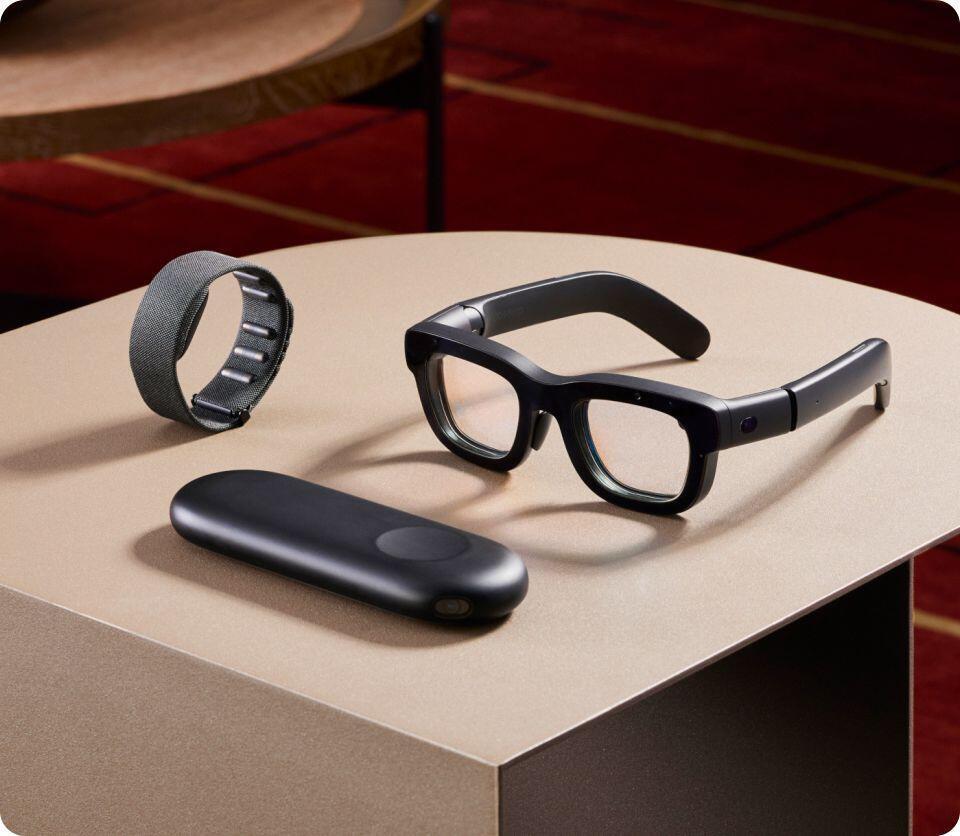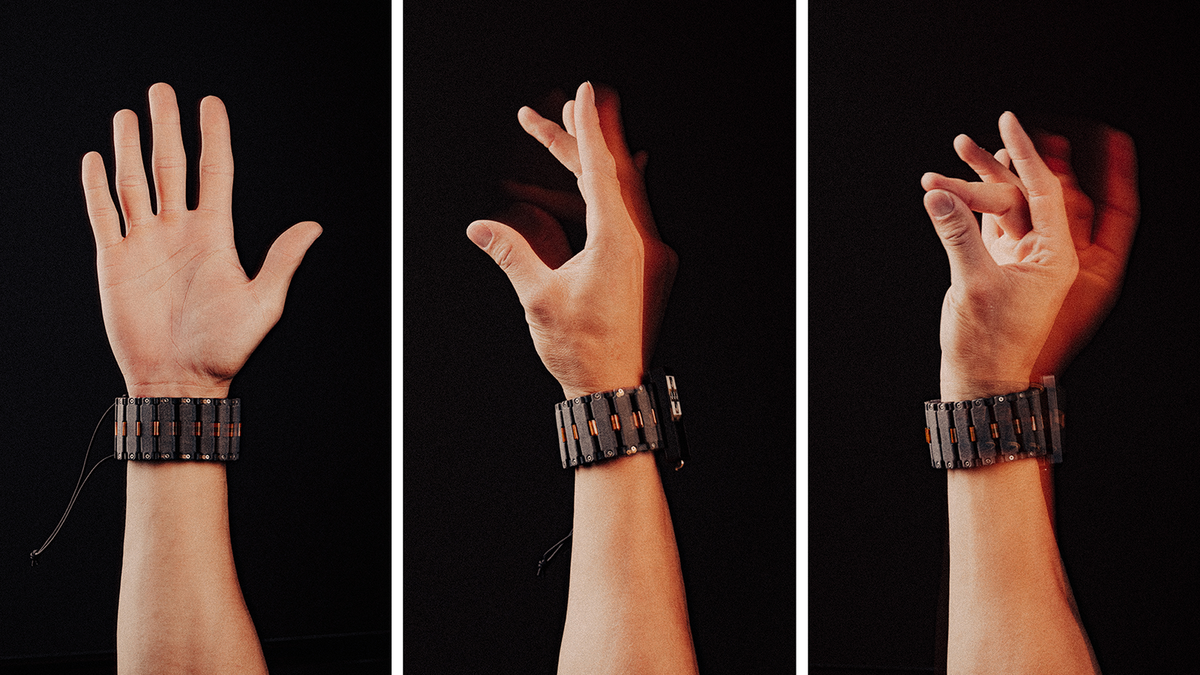
Meta Announces $800 Smart Glasses With Built-in Display and Neural Wristband for September Launch
Meta's Bold Gambit: How $800 Smart Glasses Could Reshape Personal Computing
MENLO PARK, California — Meta is preparing to launch its first smart glasses equipped with a built-in display, marking a significant escalation in the company's pursuit of next-generation computing platforms.
The device, codenamed Hypernova, will debut at Meta's Connect conference on September 17, 2025, according to multiple industry sources familiar with the development. Recent leaks and insider reports reveal that Meta has made a crucial strategic decision: reducing the starting price from an initially planned $1,000-$1,400 range to approximately $800, accepting lower profit margins to accelerate mainstream adoption.
Hypernova represents Meta's most ambitious attempt yet to create a consumer device that can compete directly with smartphones. The glasses feature a monocular display integrated into the lower portion of the right lens, capable of showing notifications, navigation directions, camera previews, and text-based interactions with Meta's AI assistant. Unlike previous smart glasses that rely primarily on audio feedback, Hypernova provides visual information directly in the user's field of view.

The device will ship bundled with a neural wristband using surface electromyography (sEMG) technology to detect muscle signals, enabling users to control the glasses through subtle finger gestures like pinching and swiping motions. This gesture control system represents a significant departure from voice commands or touch interfaces that have characterized previous wearable devices.
Surface Electromyography (sEMG) is a non-invasive technology that uses sensors placed on the skin to detect the electrical signals produced by muscles. Functioning as a type of neural interface, it translates this muscle activity into data that can be used to analyze movement or control external devices like prosthetics.
The announcement comes as Meta faces intensifying pressure to justify its massive investments in augmented and virtual reality technologies. Reality Labs has posted cumulative operating losses exceeding $50 billion since 2020, while the company seeks to establish leadership in what CEO Mark Zuckerberg has termed the next major computing platform transition.
Meta's Reality Labs Division Cumulative Operating Losses Since 2020.
| Period | Operating Loss (in billions) | Cumulative Loss (in billions) |
|---|---|---|
| Full Year 2023 | $16.1 | ~$42 |
| Full Year 2024 | $17.73 | ~$60 |
| Q1 2025 | $4.2 | >$60 |
| Q2 2025 | $4.53 | ~$70 |
Neural Interfaces Meet Consumer Reality
What sets Hypernova apart from previous smart glasses attempts is the integration of neural interface technology that Meta has been developing for years. At the heart of this innovation lies the marriage of surface electromyography (sEMG) sensing with lightweight display optics—a combination that industry observers say could solve longstanding input challenges that have limited wearable computing adoption.
The bundled neural wristband, internally codenamed "Ceres," represents years of research into translating subtle muscle movements into precise digital commands. Users can navigate interfaces through finger gestures as minute as pinching motions, eliminating the need for voice commands or obvious hand movements that have made previous smart glasses socially awkward to use in public settings.

Technical specifications reveal the ambitious scope of Meta's engineering effort. The monocular display, embedded in the lower portion of the right lens, delivers notifications, navigation prompts, real-time translations, and camera previews directly into the user's field of view. This represents a significant departure from existing smart glasses that rely primarily on audio feedback or require tethered connections to external devices.
The glasses themselves, weighing approximately 70 grams compared to the 50-gram Ray-Ban Meta predecessors, maintain the familiar Wayfarer aesthetic while accommodating substantially more sophisticated electronics. Industry observers note this weight increase reflects the technical complexity of integrating display technology, neural sensing capabilities, and autonomous computing power into a form factor acceptable for daily wear.
"The gesture recognition system appears to solve fundamental input challenges that have plagued wearable computing for years," noted one technology analyst familiar with the development process. "If the latency and accuracy claims hold up in real-world conditions, this could represent a genuine breakthrough in human-computer interaction."
Strategic Pricing Signals Platform Ambitions
Meta's decision to price Hypernova at $800—substantially below initial internal projections of $1,000 to $1,400—reveals a platform-seeding strategy reminiscent of gaming console economics. By accepting reduced profit margins, the company aims to accelerate mainstream adoption and establish market leadership before competitors can respond effectively.
This pricing strategy places Hypernova in direct competition with flagship smartphones, particularly Apple's iPhone lineup. The calculation appears straightforward: if Meta can capture even a fraction of routine smartphone interactions—checking notifications, navigation, messaging previews—the glasses could evolve from supplementary device to primary computing interface.
Current market dynamics support this aggressive positioning. Smart glasses shipments surged 110% year-over-year in the first half of 2025, with Meta's Ray-Ban collaboration achieving cumulative sales of approximately 2 million units by February. The broader augmented reality market, projected to reach $7.8 billion by 2026 according to ABI Research, suggests significant pent-up demand for practical AR applications. Projected Growth of the Augmented Reality (AR) Market to 2026.
| Year | Market Value (USD Billions) | Source |
|---|---|---|
| 2020 | 14.7 | MarketsandMarkets |
| 2022 | 31.97 | MarketsandMarkets |
| 2026 (projected) | 88.4 | MarketsandMarkets |
| 2026 (projected) | 89 | KBV Research |
Competitive analysis reveals Hypernova's unique positioning within the emerging smart glasses ecosystem. Lower-priced alternatives from Xreal, Viture, and TCL typically range from $400 to $600 but require tethered connections and lack autonomous AI capabilities. Premium devices like Apple's Vision Pro, priced at $3,500, target entirely different use cases and remain cost-prohibitive for mainstream adoption.
Technical Challenges and Market Realities
Despite its innovative approach, Hypernova faces substantial technical and market hurdles that could influence adoption trajectories. The monocular display design, while practical for weight and battery considerations, may limit immersive applications and could cause eye strain for extended use periods.
Battery life projections suggest approximately two hours of continuous heads-up display usage, though typical "glanceable" interaction patterns could extend operational periods to full days. The neural wristband introduces additional charging requirements that may complicate user experience, particularly for individuals accustomed to minimal daily technology maintenance.
Privacy concerns represent another significant challenge, particularly in European markets where regulatory scrutiny of Meta's data practices has intensified. The combination of always-available cameras, neural sensing, and AI processing capabilities raises questions about bystander privacy and data collection that could influence adoption patterns across different geographic regions.
Software limitations at launch present strategic risks. Hypernova will debut without a dedicated app store, relying instead on first-party applications for core functionality including photo capture, messaging, navigation, and Meta AI integration. This closed ecosystem approach may limit perceived value compared to smartphones' expansive application libraries.
Investment Implications and Market Dynamics
From an investment perspective, Hypernova's success could significantly influence Meta's long-term competitive positioning and financial performance. Reality Labs, the company's augmented and virtual reality division, has consumed over $50 billion in operating losses since 2020 while developing next-generation computing platforms.
Hypernova represents a critical test of this investment strategy. Success in establishing smart glasses as a mainstream product category could validate Meta's vision of the "metaverse" transition and provide new revenue streams less dependent on traditional social media advertising.
A computing platform transition is a major technological shift where a new type of hardware and software ecosystem overtakes the previous standard. Historic examples of these platform shifts include the move from personal computers to the smartphone, which created entirely new industries and changed how people interact with technology. Failure could raise questions about the company's strategic direction and resource allocation.
Several market factors suggest favorable conditions for Hypernova's introduction. Consumer fatigue with smartphone-centric digital interactions has created demand for alternative interfaces, while advances in AI and edge computing have made sophisticated wearable experiences technically feasible. The global eyewear market, valued at approximately $150 billion annually, provides substantial distribution opportunities through Meta's partnership with EssilorLuxottica.
Analysts suggest monitoring several key performance indicators following Hypernova's launch: preorder velocity, return rates, daily active usage metrics, and neural wristband adoption rates. These metrics will signal whether the device achieves Meta's goal of transitioning from novelty gadget to essential computing platform.
The Broader Technology Paradigm Shift
Hypernova's significance extends beyond Meta's immediate commercial interests to broader questions about the future of personal computing. The device represents an early attempt to solve fundamental challenges that have limited wearable technology adoption: input mechanisms, display quality, battery life, and social acceptability.
Success could accelerate industry-wide investment in augmented reality technologies and establish new standards for wearable computing interfaces. Major technology companies, including Apple and Google, are reportedly developing competing smart glasses platforms, suggesting the emergence of a new competitive battleground in personal technology.
Market projections indicate potential for substantial disruption in adjacent industries. Traditional eyewear manufacturers, smartphone accessory companies, and specialized AR startups may face increased competitive pressure as tech giants establish presence in the smart glasses market.
Looking Forward: Technology's Next Chapter
As Meta prepares to reveal Hypernova at its Connect conference on September 17, 2025, the technology industry watches with particular interest. The device's reception will provide crucial insights into consumer readiness for post-smartphone computing paradigms and validate or challenge assumptions about augmented reality's commercial viability.
For investors and industry observers, Hypernova represents more than a single product launch—it signals the beginning of a fundamental shift in how humans interact with digital information. Whether Meta can execute this vision successfully may determine not only the company's future trajectory but also the broader pace of technological transformation in personal computing.
The stakes could hardly be higher: in an industry where platform transitions create and destroy trillion-dollar market capitalizations, Meta's smart glasses gambit represents both immense opportunity and existential risk. September's revelation will begin answering whether the future of computing is destined to rest on our faces rather than in our pockets.
Investment Disclaimer: This analysis is based on current market data and historical patterns. Past performance does not guarantee future results. Readers should consult qualified financial advisors before making investment decisions based on emerging technology trends.